#the native are
Explore tagged Tumblr posts
Text


These are so fun to make
#birds#birdwatching#memes#bird memes#fashion#birding#coopers hawk#white winged scoter#native birds#bird nerd#steal his look
126K notes
·
View notes
Text

Native Miku🩷😆😆😆
#my art#native artist#hatsune miku#miku#vocaloid miku#native Miku#indigenous art#native art#miku fanart#gumi#digital art#gumi isn’t having the best time at the powwow
43K notes
·
View notes
Text
Planet's Fucked: What Can You Do To Help? (Long Post)
Since nobody is talking about the existential threat to the climate and the environment a second Trump term/Republican government control will cause, which to me supersedes literally every other issue, I wanted to just say my two cents, and some things you can do to help. I am a conservation biologist, whose field was hit substantially by the first Trump presidency. I study wild bees, birds, and plants.
In case anyone forgot what he did last time, he gagged scientists' ability to talk about climate change, he tried zeroing budgets for agencies like the NOAA, he attempted to gut protections in the Endangered Species Act (mainly by redefining 'take' in a way that would allow corporations to destroy habitat of imperiled species with no ramifications), he tried to do the same for the Migratory Bird Treaty Act (the law that offers official protection for native non-game birds), he sought to expand oil and coal extraction from federal protected lands, he shrunk the size of multiple national preserves, HE PULLED US OUT OF THE PARIS CLIMATE AGREEMENT, and more.
We are at a crucial tipping point in being able to slow the pace of climate change, where we decide what emissions scenario we will operate at, with existential consequences for both the environment and people. We are also in the middle of the Sixth Mass Extinction, with the rate of species extinctions far surpassing background rates due completely to human actions. What we do now will determine the fate of the environment for hundreds or thousands of years - from our ability to grow key food crops (goodbye corn belt! I hated you anyway but), to the pressure on coastal communities that will face the brunt of sea level rise and intensifying extreme weather events, to desertification, ocean acidification, wildfires, melting permafrost (yay, outbreaks of deadly frozen viruses!), and a breaking down of ecosystems and ecosystem services due to continued habitat loss and species declines, especially insect declines. The fact that the environment is clearly a low priority issue despite the very real existential threat to so many people, is beyond my ability to understand. I do partly blame the public education system for offering no mandatory environmental science curriculum or any at all in most places. What it means is that it will take the support of everyone who does care to make any amount of difference in this steeply uphill battle.
There are not enough environmental scientists to solve these issues, not if public support is not on our side and the majority of the general public is either uninformed or actively hostile towards climate science (or any conservation science).
So what can you, my fellow Americans, do to help mitigate and minimize the inevitable damage that lay ahead?
I'm not going to tell you to recycle more or take shorter showers. I'll be honest, that stuff is a drop in the bucket. What does matter on the individual level is restoring and protecting habitat, reducing threats to at-risk species, reducing pesticide use, improving agricultural practices, and pushing for policy changes. Restoring CONNECTIVITY to our landscape - corridors of contiguous habitat - will make all the difference for wildlife to be able to survive a changing climate and continued human population expansion.
**Caveat that I work in the northeast with pollinators and birds so I cannot provide specific organizations for some topics, including climate change focused NGOs. Scientists on tumblr who specialize in other fields, please add your own recommended resources. **
We need two things: FUNDING and MANPOWER.
You may surprised to find that an insane amount of conservation work is carried out by volunteers. We don't ever have the funds to pay most of the people who want to help. If you really really care, consider going into a conservation-related field as a career. It's rewarding, passionate work.
At the national level, please support:
The Nature Conservancy
Xerces Society for Invertebrate Conservation
Cornell Lab of Ornithology (including eBird)
National Audubon Society
Federal Duck Stamps (you don't need to be a hunter to buy one!)
These first four work to acquire and restore critical habitat, change environmental policy, and educate the public. There is almost certainly a Nature Conservancy-owned property within driving distance of you. Xerces plays a very large role in pollinator conservation, including sustainable agriculture, native bee monitoring programs, and the Bee City/Bee Campus USA programs. The Lab of O is one of the world's leaders in bird research and conservation. Audubon focuses on bird conservation. You can get annual memberships to these organizations and receive cool swag and/or a subscription to their publications which are well worth it. You can also volunteer your time; we need thousands of volunteers to do everything from conducting wildlife surveys, invasive species removal, providing outreach programming, managing habitat/clearing trails, planting trees, you name it. Federal Duck Stamps are the major revenue for wetland conservation; hunters need to buy them to hunt waterfowl but anyone can get them to collect!
THERE ARE DEFINITELY MORE, but these are a start.
Additionally, any federal or local organizations that seek to provide support and relief to those affected by hurricanes, sea level rise, any form of coastal climate change...
At the regional level:
These are a list of topics that affect major regions of the United States. Since I do not work in most of these areas I don't feel confident recommending specific organizations, but please seek resources relating to these as they are likely major conservation issues near you.
PRAIRIE CONSERVATION & PRAIRIE POTHOLE WETLANDS
DRYING OF THE COLORADO RIVER (good overview video linked)
PROTECTION OF ESTUARIES AND SALTMARSH, ESPECIALLY IN THE DELAWARE BAY AND LONG ISLAND (and mangroves further south, everglades etc; this includes restoring LIVING SHORELINES instead of concrete storm walls; also check out the likely-soon extinction of saltmarsh sparrows)
UNDAMMING MAJOR RIVERS (not just the Colorado; restoring salmon runs, restoring historic floodplains)
NATIVE POLLINATOR DECLINES (NOT honeybees. for fuck's sake. honeybees are non-native domesticated animals. don't you DARE get honeybee hives to 'save the bees')
WILDLIFE ALONG THE SOUTHERN BORDER (support the Mission Butterfly Center!)
INVASIVE PLANT AND ANIMAL SPECIES (this is everywhere but the specifics will differ regionally, dear lord please help Hawaii)
LOSS OF WETLANDS NATIONWIDE (some states have lost over 90% of their wetlands, I'm looking at you California, Ohio, Illinois)
INDUSTRIAL AGRICULTURE, esp in the CORN BELT and CALIFORNIA - this is an issue much bigger than each of us, but we can work incrementally to promote sustainable practices and create habitat in farmland-dominated areas. Support small, local farms, especially those that use soil regenerative practices, no-till agriculture, no pesticides/Integrated Pest Management/no neonicotinoids/at least non-persistent pesticides. We need more farmers enrolling in NRCS programs to put farmland in temporary or permanent wetland easements, or to rent the land for a 30-year solar farm cycle. We've lost over 99% of our prairies to corn and soybeans. Let's not make it 100%.
INDIGENOUS LAND-BACK EFFORTS/INDIGENOUS LAND MANAGEMENT/TEK (adding this because there have been increasing efforts not just for reparations but to also allow indigenous communities to steward and manage lands either fully independently or alongside western science, and it would have great benefits for both people and the land; I know others on here could speak much more on this. Please platform indigenous voices)
HARMFUL ALGAL BLOOMS (get your neighbors to stop dumping fertilizers on their lawn next to lakes, reduce agricultural runoff)
OCEAN PLASTIC (it's not straws, it's mostly commercial fishing line/trawling equipment and microplastics)
A lot of these are interconnected. And of course not a complete list.
At the state and local level:
You probably have the most power to make change at the local level!
Support or volunteer at your local nature centers, local/state land conservancy non-profits (find out who owns&manages the preserves you like to hike at!), state fish & game dept/non-game program, local Audubon chapters (they do a LOT). Participate in a Christmas Bird Count!
Join local garden clubs, which install and maintain town plantings - encourage them to use NATIVE plants. Join a community garden!
Get your college campus or city/town certified in the Bee Campus USA/Bee City USA programs from the Xerces Society
Check out your state's official plant nursery, forest society, natural heritage program, anything that you could become a member of, get plants from, or volunteer at.
Volunteer to be part of your town's conservation commission, which makes decisions about land management and funding
Attend classes or volunteer with your land grant university's cooperative extension (including master gardener programs)
Literally any volunteer effort aimed at improving the local environment, whether that's picking up litter, pulling invasive plants, installing a local garden, planting trees in a city park, ANYTHING. make a positive change in your own sphere. learn the local issues affecting your nearby ecosystems. I guarantee some lake or river nearby is polluted
MAKE HABITAT IN YOUR COMMUNITY. Biggest thing you can do. Use plants native to your area in your yard or garden. Ditch your lawn. Don't use pesticides (including mosquito spraying, tick spraying, Roundup, etc). Don't use fertilizers that will run off into drinking water. Leave the leaves in your yard. Get your school/college to plant native gardens. Plant native trees (most trees planted in yards are not native). Remove invasive plants in your yard.
On this last point, HERE ARE EASY ONLINE RESOURCES TO FIND NATIVE PLANTS and LEARN ABOUT NATIVE GARDENING:
Xerces Society Pollinator Conservation Resource Center
Pollinator Pathway
Audubon Native Plant Finder
Homegrown National Park (and Doug Tallamy's other books)
National Wildlife Federation Native Plant Finder (clunky but somewhat helpful)
Heather Holm (for prairie/midwest/northeast)
MonarchGard w/ Benjamin Vogt (for prairie/midwest)
Native Plant Trust (northeast & mid-atlantic)
Grow Native Massachusetts (northeast)
Habitat Gardening in Central New York (northeast)
There are many more - I'm not familiar with resources for western states. Print books are your biggest friend. Happy to provide a list of those.
Lastly, you can help scientists monitor species using citizen science. Contribute to iNaturalist, eBird, Bumblebee Watch, or any number of more geographically or taxonomically targeted programs (for instance, our state has a butterfly census carried out by citizen volunteers).
In short? Get curious, get educated, get involved. Notice your local nature, find out how it's threatened, and find out who's working to protect it that you can help with. The health of the planet, including our resilience to climate change, is determined by small local efforts to maintain and restore habitat. That is how we survive this. When government funding won't come, when we're beat back at every turn trying to get policy changed, it comes down to each individual person creating a safe refuge for nature.
Thanks for reading this far. Please feel free to add your own credible resources and organizations.
#us election#climate change#united states election#resources#native plants#this took 3 hours to write so maybe don't let it flop? i know i write long posts. i know i follow scientists on here#that study birds and corals and other creatures#i realize i did not link sources/resources for everything. i encourage those more qualified to add things on. i need to go to work
18K notes
·
View notes
Text
#tiktok#andrew_the_arborist#urban gardening#urban landscape#ecofriendly#native wildflowers#eco friendly#eco lawn#native plants#garden#gardening
100K notes
·
View notes
Text


i'll let phie-san say it:
#the vids i've seen on tiktok picking at her immediately get a block...#bitter otaku sitting in their socks in their mom's basement feeling threatened/enraged by a hot successful black woman outnerding them-core#also this kind of criticism is so demoralising and damaging to people who are trying to learn another language#also. accents are NORMAL and not a bad thing#i don't think that the end goal of picking up a new language necessarily has to be sounding native#and i know sometimes the way japanese people react like SUGOIII? *W* when a foreigner says like one (1) word in japanese is joked about#but like... genuinely... i always love when someone clearly has made an effort and took the time to learn some of the language#anyway she can step on those haters <3#also like. it’s just some lines in a song people need to relax…#megan thee stallion#autoplay warning#japan#japanese#language#mamushi
25K notes
·
View notes
Text
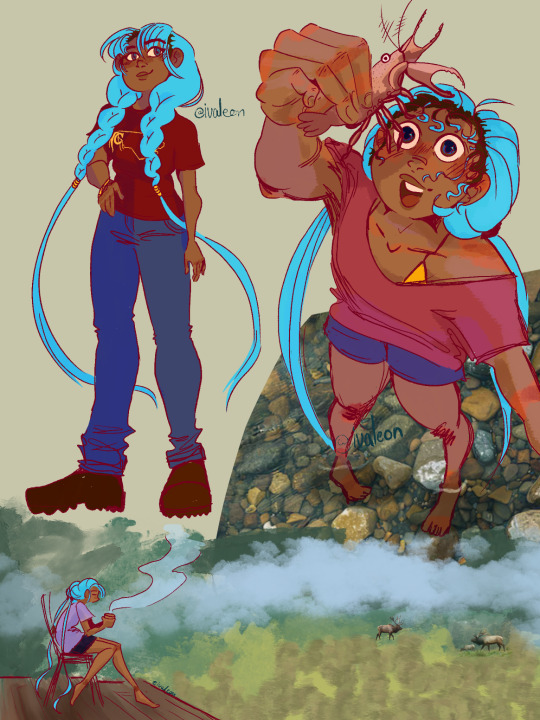
fuck it cherokee miku
i wanna see more indigenous mikus make it happen 🫵
#hatsune miku#ethnicity miku#wtf do u tag this#native american#????#cherokee#appalachian#YES IT OVERLAPS#thank you <3#my art#artists on tumblr#art#fanart#miku#demidraws#indigenous
22K notes
·
View notes
Text

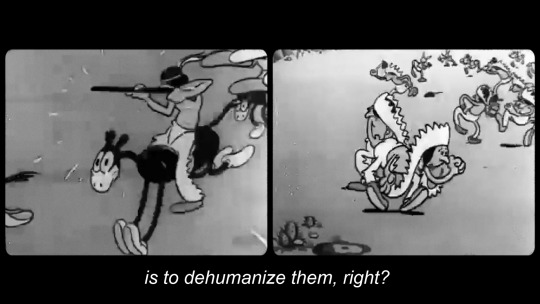
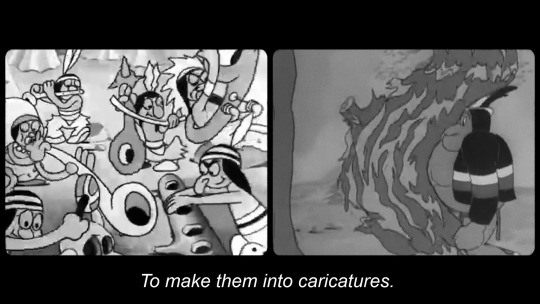
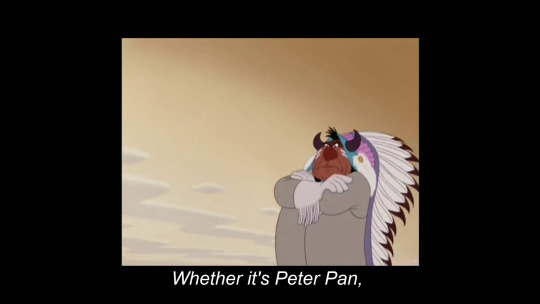


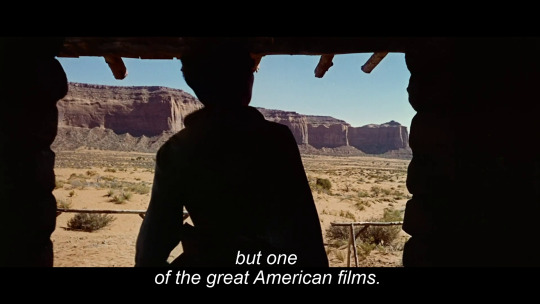
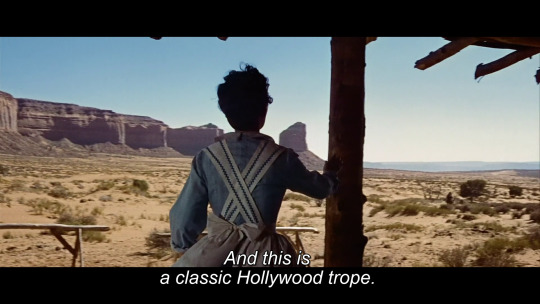

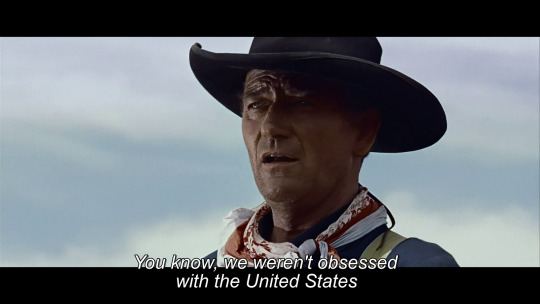
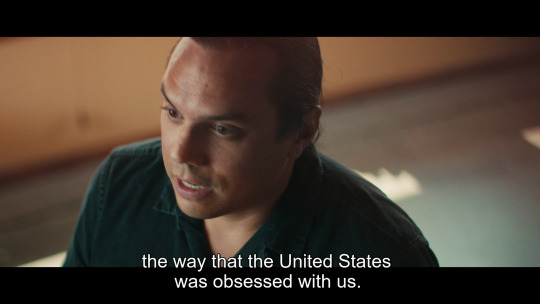
Lakota Nation vs. United States (Jesse Short Bull & Laura Tomaselli, 2022)
#lakota#indigenous#indigenous people#jesse short bull#laura tomaselli#female filmmakers#female directors#female directed films#women in film#native american#lakota nations vs. united states#documentary
47K notes
·
View notes
Text

✦ Picciriddu ✦
#own art#own characters#CanisAlbus#art#artists on tumblr#Machete#anthro#sighthound#dogs#canine#animals#chicken acquired#I tend to think Machete was a restless baby but a very well behaved shy and unobtrusive toddler#the overarching theme of his early childhood was being sick in a way or another for the majority of the time#he's originally from Sicily so I tried to depict a native Siciliana chicken but I think I might've made her a little too sturdy#his mom makes a cameo too#as well as a battalion of snails#he likes snails
14K notes
·
View notes
Text

New Miku trend?? Sign me UP
People are drawing Hatsune Miku in some of their culture's most iconic looks and I couldn't resist drawing Tlingit miku!!
#hatsune miku#tlingit#i like being able to draw stuff like this#it makes me feel closer to my mom and grandma#(im alaskan native on their side of the family! scholarships from the ciri foundation helped pay for my animation degree :D)
9K notes
·
View notes
Text

Members of the Navajo nation drape the Palestinian flag across their land, 2019
25K notes
·
View notes
Text
"With “green corridors” that mimic the natural forest, the Colombian city is driving down temperatures — and could become five degrees cooler over the next few decades.
In the face of a rapidly heating planet, the City of Eternal Spring — nicknamed so thanks to its year-round temperate climate — has found a way to keep its cool.
Previously, Medellín had undergone years of rapid urban expansion, which led to a severe urban heat island effect — raising temperatures in the city to significantly higher than in the surrounding suburban and rural areas. Roads and other concrete infrastructure absorb and maintain the sun’s heat for much longer than green infrastructure.
“Medellín grew at the expense of green spaces and vegetation,” says Pilar Vargas, a forest engineer working for City Hall. “We built and built and built. There wasn’t a lot of thought about the impact on the climate. It became obvious that had to change.”
Efforts began in 2016 under Medellín’s then mayor, Federico Gutiérrez (who, after completing one term in 2019, was re-elected at the end of 2023). The city launched a new approach to its urban development — one that focused on people and plants.
The $16.3 million initiative led to the creation of 30 Green Corridors along the city’s roads and waterways, improving or producing more than 70 hectares of green space, which includes 20 kilometers of shaded routes with cycle lanes and pedestrian paths.
These plant and tree-filled spaces — which connect all sorts of green areas such as the curb strips, squares, parks, vertical gardens, sidewalks, and even some of the seven hills that surround the city — produce fresh, cooling air in the face of urban heat. The corridors are also designed to mimic a natural forest with levels of low, medium and high plants, including native and tropical plants, bamboo grasses and palm trees.
Heat-trapping infrastructure like metro stations and bridges has also been greened as part of the project and government buildings have been adorned with green roofs and vertical gardens to beat the heat. The first of those was installed at Medellín’s City Hall, where nearly 100,000 plants and 12 species span the 1,810 square meter surface.
“It’s like urban acupuncture,” says Paula Zapata, advisor for Medellín at C40 Cities, a global network of about 100 of the world’s leading mayors. “The city is making these small interventions that together act to make a big impact.”
At the launch of the project, 120,000 individual plants and 12,500 trees were added to roads and parks across the city. By 2021, the figure had reached 2.5 million plants and 880,000 trees. Each has been carefully chosen to maximize their impact.
“The technical team thought a lot about the species used. They selected endemic ones that have a functional use,” explains Zapata.
The 72 species of plants and trees selected provide food for wildlife, help biodiversity to spread and fight air pollution. A study, for example, identified Mangifera indica as the best among six plant species found in Medellín at absorbing PM2.5 pollution — particulate matter that can cause asthma, bronchitis and heart disease — and surviving in polluted areas due to its “biochemical and biological mechanisms.”
And the urban planting continues to this day.
The groundwork is carried out by 150 citizen-gardeners like Pineda, who come from disadvantaged and minority backgrounds, with the support of 15 specialized forest engineers. Pineda is now the leader of a team of seven other gardeners who attend to corridors all across the city, shifting depending on the current priorities...
“I’m completely in favor of the corridors,” says [Victoria Perez, another citizen-gardener], who grew up in a poor suburb in the city of 2.5 million people. “It really improves the quality of life here.”
Wilmar Jesus, a 48-year-old Afro-Colombian farmer on his first day of the job, is pleased about the project’s possibilities for his own future. “I want to learn more and become better,” he says. “This gives me the opportunity to advance myself.”
The project’s wider impacts are like a breath of fresh air. Medellín’s temperatures fell by 2°C in the first three years of the program, and officials expect a further decrease of 4 to 5C over the next few decades, even taking into account climate change. In turn, City Hall says this will minimize the need for energy-intensive air conditioning...
In addition, the project has had a significant impact on air pollution. Between 2016 and 2019, the level of PM2.5 fell significantly, and in turn the city’s morbidity rate from acute respiratory infections decreased from 159.8 to 95.3 per 1,000 people [Note: That means the city's rate of people getting sick with lung/throat/respiratory infections.]
There’s also been a 34.6 percent rise in cycling in the city, likely due to the new bike paths built for the project, and biodiversity studies show that wildlife is coming back — one sample of five Green Corridors identified 30 different species of butterfly.
Other cities are already taking note. Bogotá and Barranquilla have adopted similar plans, among other Colombian cities, and last year São Paulo, Brazil, the largest city in South America, began expanding its corridors after launching them in 2022.
“For sure, Green Corridors could work in many other places,” says Zapata."
-via Reasons to Be Cheerful, March 4, 2024
#colombia#brazil#urban#urban landscape#urban planning#cities#civil engineering#green architecture#green spaces#urban heat#urban heat island effect#weather#meteorology#global warming#climate change#climate hope#climate optimism#climate emergency#climate action#environment#environmental news#city architecture#bicycling#native plants#biodiversity#good news#hope#solarpunk#ecopunk#hopepunk
18K notes
·
View notes
Text
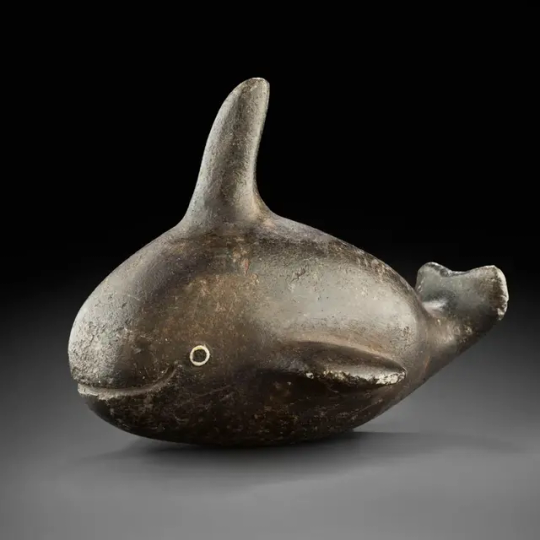
Steatite whale effigy, Chumash people, southern California coast, circa 1200-1600
from The Montreal Museum of Fine Arts
6K notes
·
View notes
Text

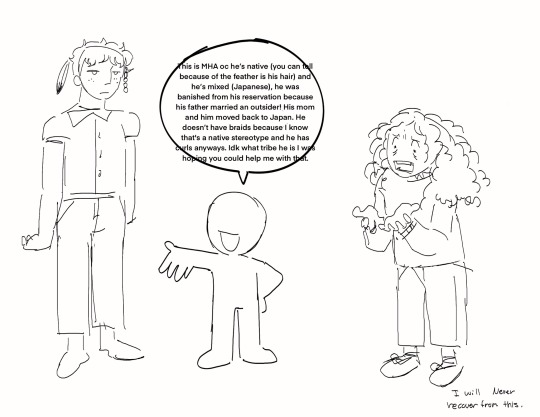
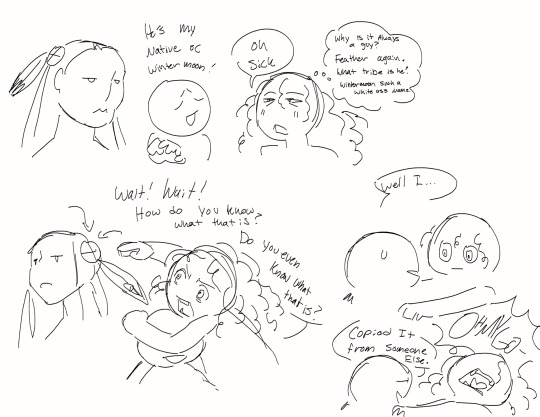

I genuinely feel like I’m going insane sometimes
#native artist#character design#digital art#indigenous artist#visual development#character art#oringinal character
60K notes
·
View notes
Text
Things the Biden-Harris Administration Did This Week #39
October 18-25 2024.
President Biden issued the first presidential apology on behalf of the federal government to America's Native American population for the Indian boarding school policy. For 150 years the federal government operated a system of schools which aimed to destroy Native culture through the forced assimilation of native children. At these schools students faced physical, emotional, and sexual abuse, and close to 1,000 died. The Biden-Harris Administration has been historic for Native and Tribal rights. From the appointment of the first ever Native American cabinet member, Secretary of the Interior Deb Haaland, to the investment of $46 billion dollars on tribal land, to 200 new co-stewardship agreements. The last 4 years have seen a historic investment in and expansion of tribal rights.
The Biden-Harris Administration proposed a new rule which would make contraceptive medication (the pill) free over the counter with most Insurance. The new rule would ban cost sharing for contraception products, including the pill, condoms, and emergency contraception. On top of over the counter medications, the new rule will also strength protections for prescribed contraception without cost sharing as well.
The EPA announced its finalized rule strengthening standards for lead paint dust in pre-1978 housing and child care facilities. There is no safe level of exposure to lead particularly for children who can suffer long term developmental consequences from lead exposure. The new standards set the lowest level of lead particle that can be identified by a lab as the standard for lead abatement. It's estimated 31 million homes built before the ban on lead paint in 1978 have lead paint and 3.8 million of those have one or more children under the age of 6. The new rule will mean 1.2 million fewer people, including over 300,000 children will not be exposed to lead particles every year. This comes after the Biden-Harris Administration announced its goal to remove and replace all lead pipes in America by the end of the decade.
The Department of Transportation announced a $50 million dollar fine against American Airlines for its treatment of disabled passengers and their wheelchairs. The fine stems from a number of incidences of humiliating and unfair treatment of passages between 2019 and 2023, as well as video documented evidence of mishandling wheelchairs and damaging them. Half the fine will go to replacing such damaged wheelchairs. The Biden administration has leveled a historic number of fines against the airlines ($225 million) for their failures. It also published a Airline Passengers with Disabilities Bill of Rights, passed a new rule accessible lavatories on aircraft, and is working on a rule to require airlines to replace lost or damaged wheelchairs with equal equipment at once.
The Department of Energy announced $430 million dollars to help boost domestic clean energy manufacturing in former coal communities. This invests in projects in 15 different communities, in places like Texas, West Virginia, Pennsylvania, Tennessee, Kentucky, and Michigan. The plan will bring about 1,900 new jobs in communities struggling with the loss of coal. Projects include making insulation out of recycled cardboard, low carbon cement production, and industrial fiber hemp processing.
The Department of Transportation announced $4.2 billion in new infrastructure investment. The money will go to 44 projects across the country. For example the MBTA will get $400 million to replace the 92 year old Draw 1 bridge and renovate North Station.
The Department of Transportation announced nearly $200 million to replace aging natural gas pipes. Leaking gas lines represent a serious public health risk and also cost costumers. Planned replacements in Georgia and North Carolina for example will save the average costumer there over $900 on their gas bill a year. Replacing leaking lines will also remove 1,000 metric tons of methane pollution, annually.
The Department of the Interior announced $244 million to address legacy pollution in Pennsylvania coal country. This comes on top of $400 million invested earlier this year. This investment will help close dangerous mine shafts, reclaim unstable slopes, improve water quality by treating acid mine drainage, and restore water supplies damaged by mining.
Data shows that President Biden's Inflation Reduction Act (passed with Vice-President Harris' tie breaking vote) has saved seniors $1 billion dollars on out-of-pocket drug costs. Seniors with certain high priced drugs saw their yearly out of pocket costs capped at $3,500 for 2024. In 2024 all seniors using Medicare Part D will see their out of pocket costs capped at $2,000 for the year. It's estimated if the $2,000 cap had been in effect this year 4.6 million seniors would have hit it by June and not have had to pay any more for medication for the rest of the year.
The Department of Education announced a new proposed rule to bring student debt relief for 8 million struggling borrowers. The Biden-Harris Administration has managed despite road blocks from Republicans in Congress, the courts and law suits from Republican states to bring student loan forgiveness to 5 million Americans so far through different programs. This latest rule would take into account many financial hardships faced by people to determine if they qualify to have their student loans forgiven. The final rule cannot be finalized before 2025 meaning its fate will be decided at the election.
The Department of Agriculture announced $1.5 billion in 92 partner-driven conservation projects. These projects aim at making farming more susceptible and environmental friendly, 16 projects are about water conservation in the West, 6 support use of innovative technologies to reduce enteric methane emissions in livestock. $100 million has been earmarked for Tribal-led projects.
#Thanks Biden#Joe Biden#Kamala Harris#politics#US politics#American politics#Native Americans#indigenous rights#lead paint#reproductive rights#reproductive health#lead poisoning#disability#infastructure#climate change#drug prices
6K notes
·
View notes
Text
this is a great time of year to buy from native stores or donate to native organizations. you can figure out who's land you're on here, and below i've listed some (of many) businesses you can support ♡




B.Yellowtail --- jewlery, clothing, and home goods designed by Bethany Yellowtail, citizen of the Northern Cheyenne Nation and from the Apsáalooke (Crow) Nation
Cheekbone Beauty --- sustainable, low-waste beauty products from Jenn Harper, an Anishinaabe artist based in Canada
Trickster --- atheletic products from Tlingit and Deg Hit’an Athabascan siblings (Alaska)
NativeHumboldt on Etsy --- the artist, Shayna McCullough, and their fiancé make designs inspired by traditional designs from their culture; she is from the Yurok tribe and descended from the Hupa, Karuk, Redwood Creek, Pit River, Yuki, Wintun, Pomo (tribes in California), and Chetco tribe (in Oregon)
OklahomaThirtyNine on Etsy --- they mostly sell beaded work, particularly earrings, as well as some necklaces
xBeadsByMandyx on Etsy --- handmade beaded earrings, from a Cherokee veteran
food products, from wine to sauces to teas to mixes to fish to jerky and nuts, sorted by store with details beside each store


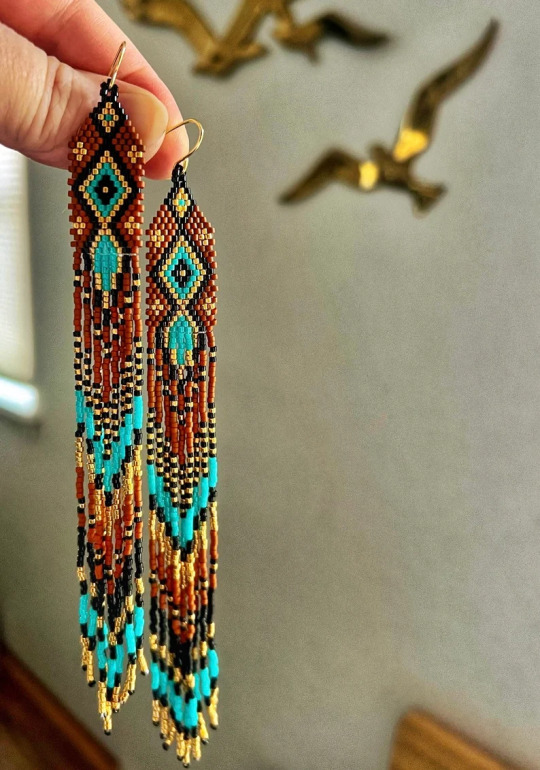
#indigenous people's day#art#native art#culture#food#indigenous#native american#native businesses#buy native
6K notes
·
View notes